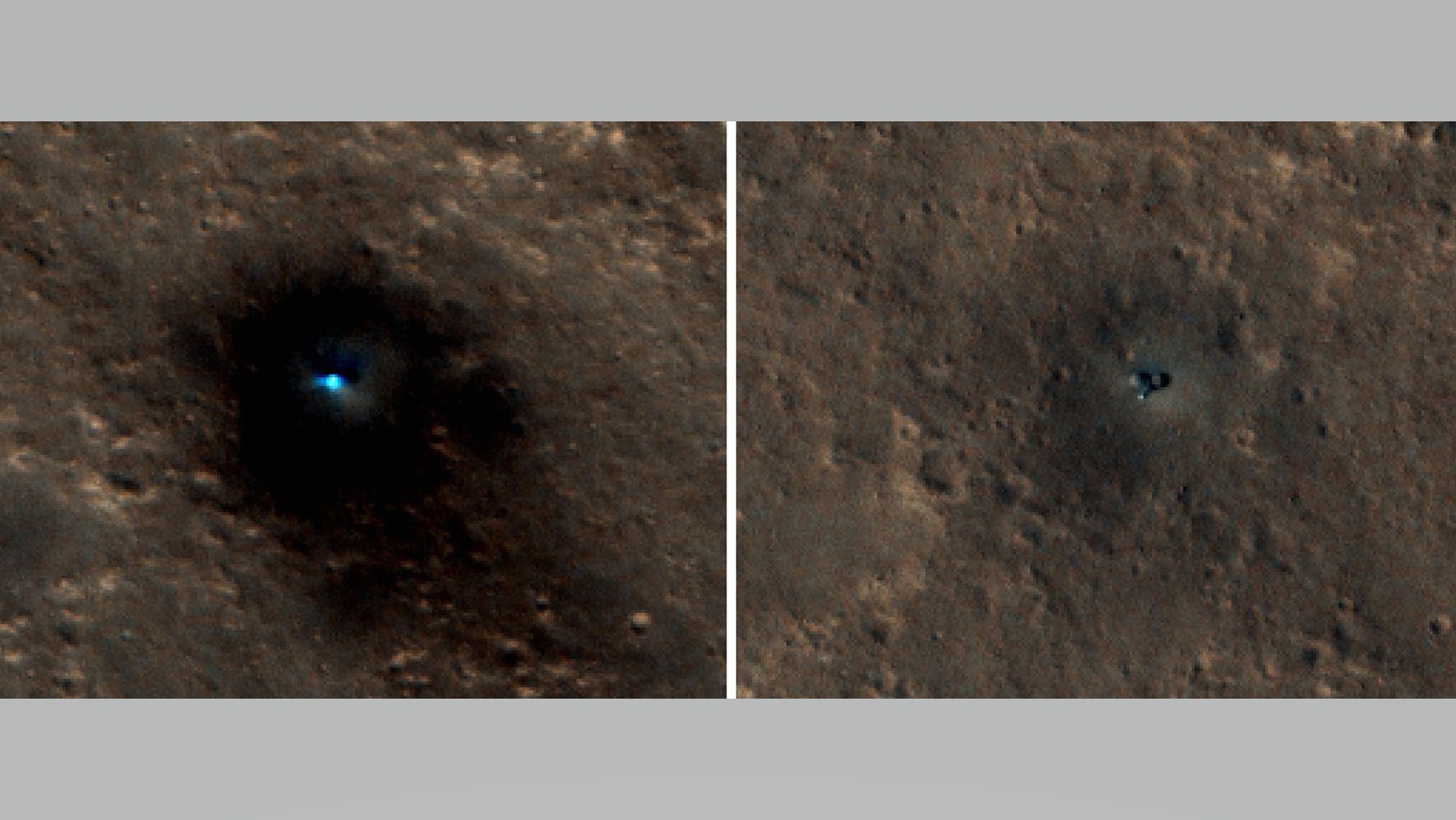NASA's InSight Mars lander spotted from orbit, covered in dust

The dust buildup on the NASA Jet Propulsion Laboratory's InSight Mars lander is severe enough to see from orbit.
You can see the red Martian regolith covering the lander, which touched down in November 2018, in a high-definition image acquired April 9 from the agency's Mars Reconnaissance Orbiter.
The spacecraft's High Resolution Imaging Experiment (HiRISE) is often tasked with taking detailed pictures of spacecraft on the surface, especially when a robot finds itself in difficult circumstances. The InSight Mars lander went into safe mode in January briefly after so much dust covered its solar panels that little solar power was available to the lander, although power production has since recovered.
Related: Photos of NASA's InSight mission to probe the Red Planet's core
"Long-term change detection at sites, like the InSight landing area, tells us how dust moves around Mars and helps us understand how the surface evolves over time," the University of Arizona, which manages HiRISE, stated Friday (April 15).
The agency said in a February update that it expects power to continue only until midyear or so. "The solar panels of NASA's InSight lander are producing almost as much power as they did before the [January] storm. That power level should enable the lander to continue science operations into the summer," the update stated.
InSight, which landed on the Red Planet in 2018, has been working on reduced power for a while due to dust buildup on its twin solar panels. Engineers managed to remove some dust on a single panel in 2021, by drizzling sand over the panel. But InSight hasn't been lucky enough to get a gust of wind to brush dust away.
Breaking space news, the latest updates on rocket launches, skywatching events and more!
As a result, last year, NASA warned that reduced power availability could end InSight's operations sometimes in 2022. Compounding the issue is the natural orbital cycle of Mars. In 2021, the planet reached its greatest distance from the sun, weakening available solar power, and seasonal cycles of dust activities are picking up.
The InSight lander, which was designed to last one Martian year (687 Earth days) is focused on understanding the interior of Mars, in particular by observing the Red Planet temblors dubbed marsquakes.
Follow Elizabeth Howell on Twitter @howellspace. Follow us on Twitter @Spacedotcom and on Facebook.

Elizabeth Howell (she/her), Ph.D., was a staff writer in the spaceflight channel between 2022 and 2024 specializing in Canadian space news. She was contributing writer for Space.com for 10 years from 2012 to 2024. Elizabeth's reporting includes multiple exclusives with the White House, leading world coverage about a lost-and-found space tomato on the International Space Station, witnessing five human spaceflight launches on two continents, flying parabolic, working inside a spacesuit, and participating in a simulated Mars mission. Her latest book, "Why Am I Taller?" (ECW Press, 2022) is co-written with astronaut Dave Williams.

